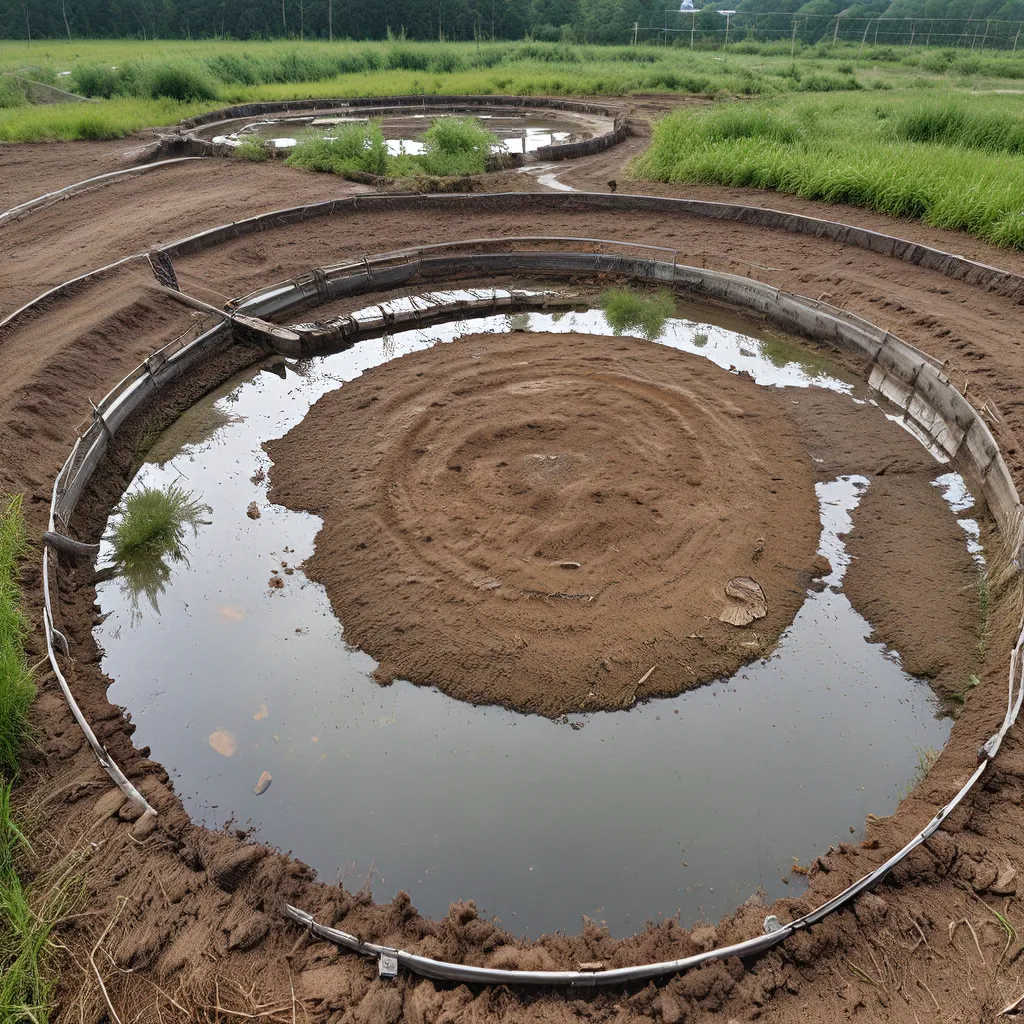
Ah, the world of wastewater treatment – where the unsung heroes of the environmental movement toil away, transforming our mucky, smelly leftovers into something truly remarkable. It’s a world that often goes unnoticed, overshadowed by the glamour of renewable energy or the allure of urban farming. But my friends, let me tell you, this is where the real magic happens.
The Untapped Potential of Wastewater
As I delve into the world of wastewater treatment, I can’t help but be amazed by the sheer untapped potential that lies within those murky depths. Did you know that half the nutrients in food by-products and human waste produced in cities is destined for landfill or incineration? That’s a staggering amount of valuable resources quite literally going down the drain.
But what if I told you that we can change all that? That we can transform our wastewater from a mere nuisance into a veritable goldmine of opportunity? Welcome to the world of the circular bioeconomy – a revolutionary approach that’s poised to turn the traditional “take, make, and waste” model on its head.
Embracing the Circular Bioeconomy
You see, the circular bioeconomy is all about maximizing the value we can extract from organic waste streams, transforming them into a diverse array of valuable products. From organic fertilizers to biomaterials, bioenergy, and even pharmaceuticals, the possibilities are truly endless.
And guess what? Cities are at the forefront of this revolution. With half of the world’s population now living in urban centers, and 80% of the world’s food being consumed within cities, these bustling hubs are the perfect breeding ground for a thriving circular bioeconomy.
Unlocking the Power of Wastewater
So, how exactly can wastewater treatment play a pivotal role in this transformation? Well, my friends, let me tell you a story.
Imagine a world where organic waste is no longer seen as a problem to be disposed of, but rather as a valuable resource to be harnessed. Through innovative technologies and smart policy frameworks, cities can rapidly transform their collection systems and increase organic waste collection rates, ensuring that these precious materials don’t end up in landfills or polluting our waterways.
And what happens next? These organic materials can be converted into a veritable treasure trove of valuable products. From organic fertilizers to power our regenerative peri-urban farms, to biomaterials that can be used in everything from fashion to construction, to bioenergy that can light up our cities – the possibilities are truly endless.
Designing Out Waste, Designing in Value
But the real magic happens when we start to design out waste altogether. You see, in a circular bioeconomy, food products are designed to be healthy for both people and the planet, with packaging that can be composted or recycled just as easily as the food itself.
Imagine a world where ugly fruits and vegetables are repurposed into delicious new food products, where mushrooms are grown on spent coffee beans, and where bean curd robes are transformed into plant-based meat alternatives. It’s a world where food designers and brands have the power to shape our consumption habits, guiding us towards a future where healthy, regenerative food is the easy and accessible choice.
Reaping the Rewards of a Circular Bioeconomy
And the benefits of all this? Well, let’s just say the numbers are staggering. Avoiding the degradation of 15 million hectares of arable land per year, saving 450 trillion liters of fresh water, and lowering the health costs associated with pesticide use by $550 billion – these are the kinds of game-changing impacts we’re talking about.
But it’s not just the environment that stands to benefit. The circular bioeconomy presents an economic opportunity upwards of $700 billion, as businesses tap into high-growth sectors like biomaterials and plant-based proteins. And let’s not forget the potential for improved human health, with significant reductions in antimicrobial resistance, air pollution, water contamination, and foodborne diseases.
A Call to Action
Now, I know what you’re thinking – this all sounds too good to be true, right? Well, I assure you, the potential is very real. But realizing this vision will require a global, systems-level change, with collaboration across all the main urban food system actors.
From producers and brands to processors and retailers, everyone has a role to play in shaping this new, healthier, more sustainable future. And let me tell you, the team at Alpha Wastewater is more than ready to be a part of this revolution.
So, what are you waiting for? Let’s dive in, roll up our sleeves, and start unlocking the power of wastewater to build a thriving circular bioeconomy. The future is ours for the taking, my friends, and I can’t wait to see what we can accomplish together.
Embracing the Complexity, Celebrating the Possibilities
Of course, I know that transforming our global food system isn’t going to be easy. There are complex challenges, competing priorities, and entrenched interests to navigate. But that’s all part of the adventure, isn’t it?
As we delve deeper into the world of wastewater treatment and the circular bioeconomy, we’ll undoubtedly uncover new complexities, differing perspectives, and evolving conclusions. But that’s precisely what makes this journey so exciting. The more we explore, the more we’ll learn, and the better equipped we’ll be to tackle these monumental challenges.
So, let’s embrace the complexity, celebrate the possibilities, and continue to push the boundaries of what’s possible. Because when it comes to building a healthier, more sustainable future, the stakes have never been higher. And I, for one, am ready to do whatever it takes to make it happen.